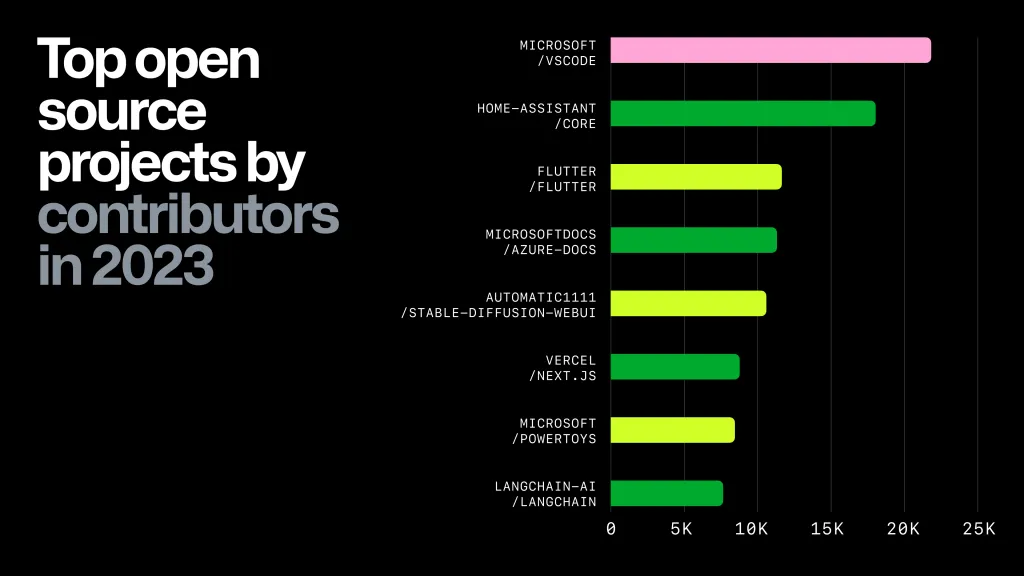What is Flutter?
Flutter is a framework created by Google, introduced in 2018, designed for cross-platform programming using the Dart programming language. It enables the development of applications for multiple platforms, including Android, iOS, macOS, Linux, and Windows, using a single codebase. It's the go-to companion for any product aiming to save both money and time. For more information, you can check our blog:
- Why should you consider using Flutter for your next mobile project
- Why is Flutter the best choice for building a mobile app minimum viable product
Is Flutter still a good tool?
In 2024, Flutter not only remains relevant but continues to thrive, solidifying its position in the toolbox of available programming tools. Besides continuous improvements in performance, stability, and memory management by the Flutter team over the last two years, developers now have the capability to build software for macOS, Windows, and Linux. This versatility further encourages the continuous use of this technology due to its adaptability. Material 3 has become the default style for new projects, giving developers access to beautiful components that just beg to be used in their projects. The community continues to impress with the quality of solutions, with nearly 30,000 available packages that can be used at any moment, 73 of which have been acknowledged by Google as packages that every developer should consider when building applications.
Flutter ranks third on Github in terms of number of contributors, indicating not only a growing number of packages but also ensuring the framework's rapid development.

Source: Github blog
Flutter in 2023: Expanding Horizons in Various Industries
2023 was a good year for Flutter, witnessing its adoption and success across diverse sectors. The framework's versatility and efficiency were highlighted in several high-profile projects, further cementing its position as a leading tool for cross-platform development.
Google's Continued Commitment: A significant endorsement for Flutter came from Google itself, with major tools like Google Earth and Google Classroom being rewritten using Flutter. This move not only demonstrates Google's confidence in Flutter but also showcases its capability to handle large-scale, complex applications.
Productivity and Project Management with ClickUp: ClickUp, a comprehensive productivity tool, embraced Flutter for its mobile application development. Simon Leier, a Software Engineer at ClickUp, detailed their approach to managing CI/CD for their Flutter app, offering insights into the practical application of Flutter in enhancing workflow and project management.
Banking Sector Innovation: Credit Agricole Bank Polska's collaboration with LeanCode to develop the CA24 mobile banking application is a testament to Flutter's potential in the financial services industry. The app, developed by a team including 30 Flutter developers, features advanced functionalities like biometric authentication, highlighting Flutter's capability to handle sophisticated, secure financial applications.
AWS Amplify's Flutter Integration: Amazon's AWS Amplify announced General Availability for Amplify Flutter in 2021, and since then, they have been dedicated to integrating AWS services into Flutter applications. The release of v1.0.0 of Amplify Flutter, fully rewritten in Dart, marks a significant milestone, offering Flutter developers robust tools for building multi-platform applications.
These examples from 2023 illustrate Flutter's growing influence and adaptability across various industries. From productivity tools to banking apps, and from cloud services integration to rapid development in food delivery, Flutter has proven its worth as a versatile, efficient framework for modern app development.
Discover large brands that built their apps with Flutter.
The Future of Flutter
In 2024, we anticipate Flutter becoming an even more powerful tool for creating new products. The primary focus will be on strengthening its core capabilities to provide a more potent, efficient, and optimized developer experience. The goals of the Flutter team and community will concentrate on enhancing framework stability, improving performance, and adding features to satisfy developers' needs. With the adoption of a new rendering engine, Impeller, there has been a significant change ensuring improved performance in animations and resolving shader compilation issues that previously caused suboptimal visual experiences. Over time, Flutter is expected to become even faster and more stable. In the dynamic tech landscape where innovations continually emerge, Flutter is not just a tool for standard mobile app development; it is a versatile instrument capable of handling advanced technologies such as augmented reality (AR) and the Internet of Things (IoT). Flutter serves as a reliable foundation for creators, enabling the exploration and implementation of innovative ideas.
Two Mobile Platforms for the Price of One – Can it Get Any Faster?
Flutter's greatest advantage lies in its versatility, offering two mobile platforms for the price of one and additionally supporting web and desktop applications from a single codebase. But can software development be even faster? Certainly, especially with dedicated low-code tools for Flutter, such as FlutterFlow. Low-code tools enable the building of applications, in this case, mobile applications, without the need for extensive coding or with minimal coding requirements. FlutterFlow, one such tool, provides access to an extensive library of ready-made widgets, integrations with external systems, automatic distribution, databases, and automated testing – all familiar to our Flutter developers. Utilizing such automation allows us to apply our knowledge in building products, focusing only on business issues. Low-code tools significantly reduce the time it takes to produce a product, be it a Proof of Concept (POC), Minimum Viable Product (MVP), or a complete application. An example of successful implementation is an application that we created for Adam Mickiewicz University in Poznań, developed in just two weeks after brief workshops with the client, drastically reducing research time and optimizing the entire process.
Summary
Flutter, as an ever-evolving tool, is gaining increasing popularity among developers and companies. Its flexibility, versatility, and continuous improvement make it an incredibly attractive choice for both small and large projects. In 2024, we expect Flutter to maintain its leadership position in the cross-platform programming market, offering developers new opportunities and tools for effective work. Flutter's continuous journey toward perfection promises exciting prospects for the programming industry.



